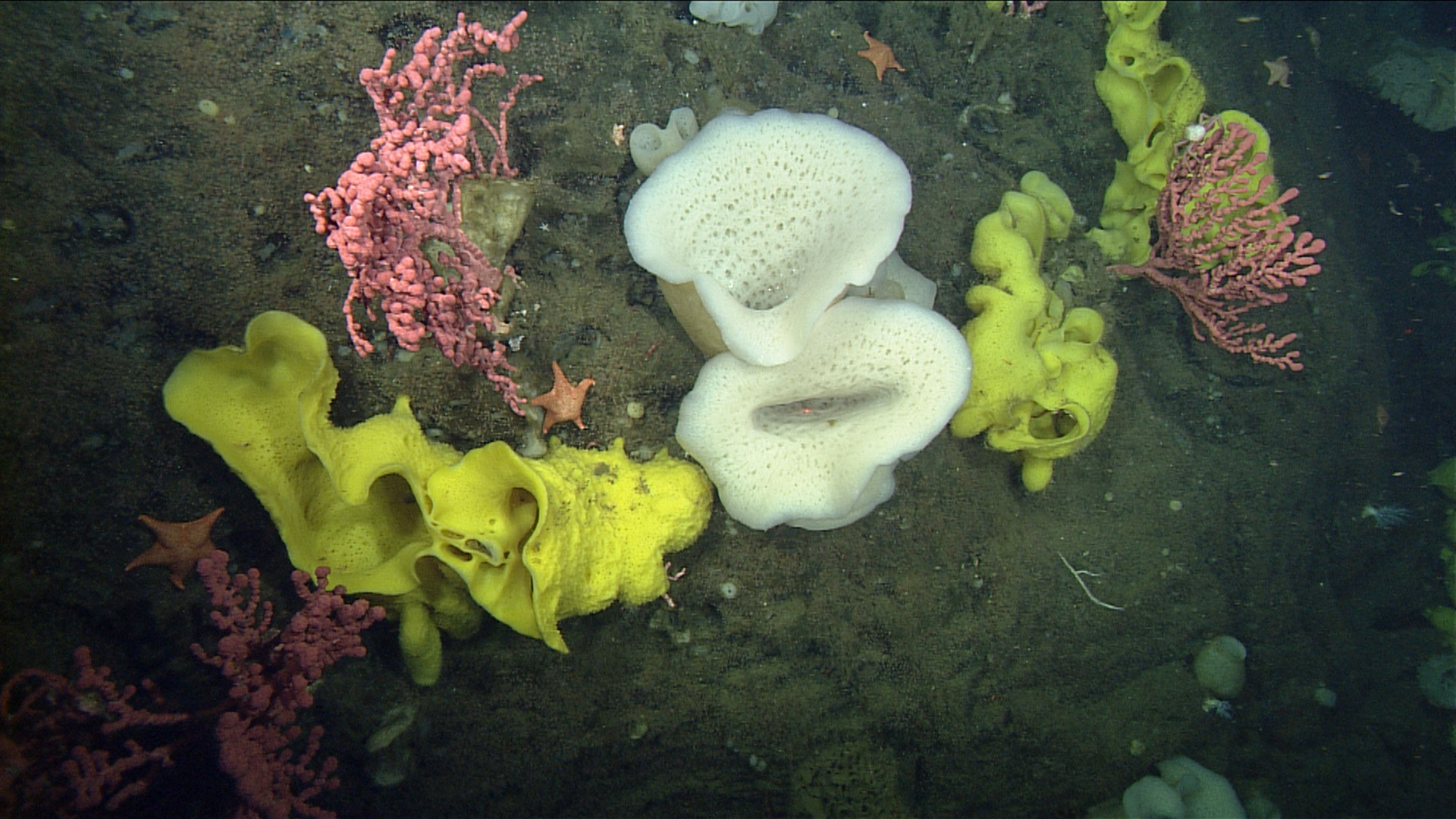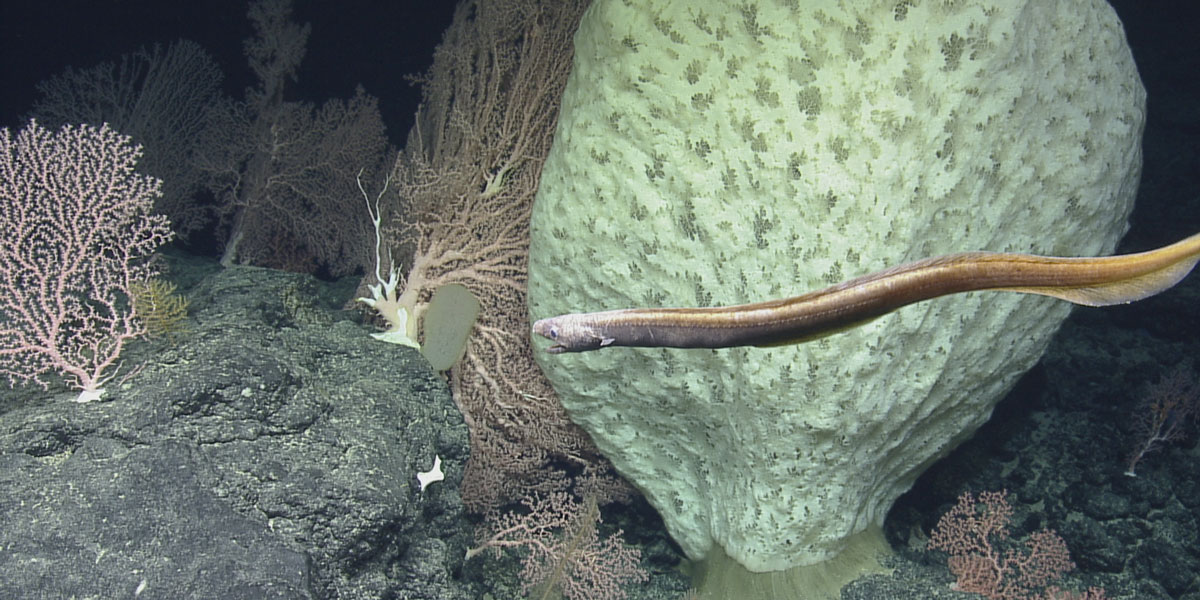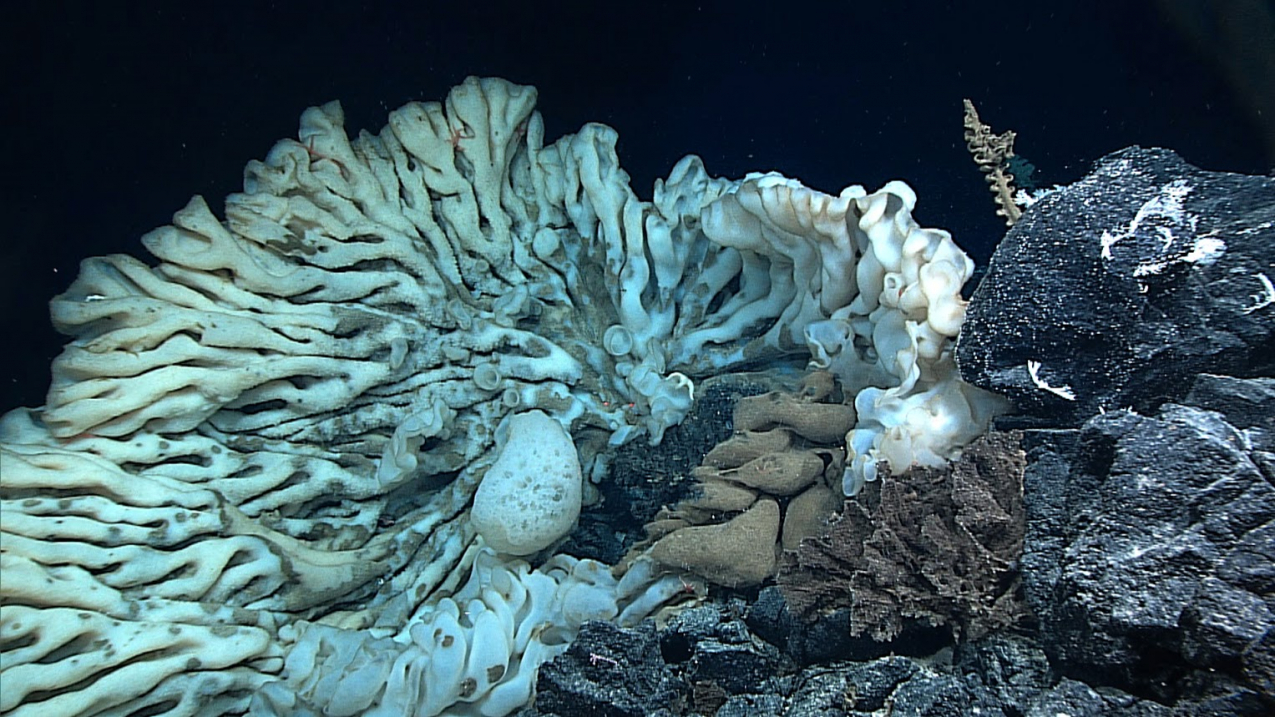
Deep-sea coral and sponge reefs thrive in the depths of the cold seas around the globe. Unlike shallow, tropical coral and sponge reefs, these deep-sea coral and sponge reefs live where there’s little light, from 150 feet to more than 10,000 feet below sea level. These are the least explored places in the ocean.
Home is Where the Sponge and Corals Are
Like on shallow water coral reefs, many fish, shrimp, crab, and other organisms use deep-sea corals and sponges as their habitat. These deep reefs are essential to the ocean's health because they help to preserve ocean biodiversity and the long-term sustainability of commercial and recreational fish species that feed on them.
In the U.S., scientists have discovered deep-sea corals and sponges on continental shelves, slopes, canyons, and seamounts throughout U.S. marine waters.
Seamounts as Food Gatherers
Seamounts are especially good environments for deep sea sponges. They rise off the ocean bottom and interact with water flowing around them. Because sponges and corals can’t move around to find food, they are dependent upon ocean currents to bring their food to them: they feed on microscopic organisms “that flow in ocean currents.” Seamounts have strong currents running over them that can deliver animals living there with a constant supply of planktonic food.

Seamounts as Food Gatherers
Seamounts are especially good environments for deep sea sponges. They rise off the ocean bottom and interact with water flowing around them. Because sponges and corals can’t move around to find food, they are dependent upon ocean currents to bring their food to them: they feed on microscopic organisms “that flow in ocean currents.” Seamounts have strong currents running over them that can deliver animals living there with a constant supply of planktonic food.
And the largest sponge ever found was observed on a NOAA deep-sea exploration cruise at 7,000 feet on a seamount in the Papahānaumokuākea Marine National Monument. It’s the size of a mini-van. Now, that’s a big guy!

Sponge Reefs
Some deep-sea sponges form reefs without corals. Glass sponge reefs form dense communities, suspension feeding mainly on bacteria. Our Featured Scientist, Amanda Kahn studies glass sponge reefs in the deep off British Colombia. These reefs can be as old as 9,000 years and form a habitat for a diversity of animals. Dr. Kahn found that sponge reefs are like an oasis in the deep sea where they turn their waste into a form that’s edible to other creatures. Like sponges on shallow, tropical coral reefs, they connect the microbial food web to the rest of the food web.
Protecting What is Largely Unknown: The Deep Sea
Deep-sea coral and sponge habitats are among the most biodiverse and productive ecosystems throughout the entire ocean. Both living and dead corals and sponges provide habitat for other marine life. Many of the animals that visit or live in these ecosystems are targets of bottom trawling fisheries, which can destroy the habitat.
There’s much we don’t yet know about these ecosystems. NOAA comments that, “Increasing global human demand for resources has created a need for expanded science and conservation of these deep-ocean ecosystems, their living resources, and the benefits they may yield.
Watch this video of exploration of deep-sea sponges.
















